
|
JAPANESE PRINTS A MILLION QUESTIONS TWO MILLION MYSTERIES |
Ukiyo-e Prints浮世絵版画 |
|
Port Townsend, Washington |
|
A CLICKABLE INDEX/GLOSSARY (Hopefully this will be an ever changing and growing list.)
Aoi THRU Bl |
|
|
TERMS FOUND ON THIS PAGE:
Aoi, Aragoto, Arashi Kitsusaburō II,Aratame, Araumi, Ariake andon, Asagao, Asanoha, Asanohamon, Ashikaga Yorikane, Augustus the Strong, Awase, Ayame, Merrily Baird,
Bamboo (Take), Bamboo &
Sparrows (Takesuzume), Bandō Hikosaburō
III, Baren-sujizuri, Bat motif, Bekkō, Bengara, Beni-e, Beni-girai, Ben(zai)ten, Bero-ai, Bijin, Bishamon, Bishamonkikkō and Blue and white porcelain
葵, 荒事, 嵐橘三郎, 改, 荒海, 有明行灯, 朝顔, 麻の葉, 麻の葉文, 足利頼錦, 袷, 菖蒲, 竹, 竹雀, 三世坂東彦三郎, 五世坂東彦三郎, 坂東三津五郎, 坂東しうか, 番傘, 馬連, 鼈甲, 紅絵, 紅嫌い, 弁(財)天, ベロ藍, 美人, 毘沙門 and 毘沙門亀甲
あおい, あらごと, あらし.きつさぶろう, あらため, あらうみ, ありあけあんどん, あさがお, あさのは, あさのはもん, あしかが.よりかね, アウグストⅡ世, あわせ, あやめ, たけ, たけすずめ, ばんどう.ひこさぶろう, ばんどう.ひこさぶろう, ばんどう.みつごろう, ばんどう.しうか, ばんがさ, ばれん, べっこう, ベンガラ, べにえ, べにぎらい, べん(ざい)てん, びじん, びしゃもん and びしゃもん.きっこう
|
|
|
TERM/NAME |
KANJI/KANA |
DESCRIPTION/ DEFINITION/ CATEGORY Click on the yellow numbers to go to linked pages. |
|
|
||
|
Aoi |
葵
あおい
|
Hollyhock - often used as a decorative motif or as a family crest or mon. The hollyhock is a native Japanese plant which came to be associated with the Kamo Shrine in Kyoto and through that connection it acquired a sacred significance. Because of that quite a few families devoted to that shrine adapted the motif as their own personal crests.
Source: The Elements of Japanese Design by John Dower (pp. 58-59)
Taxonomy, morphology and semiotics are all concepts I have trouble grasping - among a whole host of others. That is why I struggle over almost each and every entry I have made on these pages. For what seems like ages I have accepted that aoi (葵) is as Dower states the simple hollyhock. In this case the Alcea rosea. However, as I started to dig deeper I found that the hollyhock is often referred more specifically to as the tachiaoi (立葵 or たちあおい) and no matter how much I looked I couldn't find leaves which looked enough like the ones in the crests to the left. That is until I ran across another aoi, the futbaaoi (双葉葵 or ふたばあおい) which is the Asarum caulescens. We know it as wild ginger.
The image of the plant is from the web site operated by Shu Suehiro at: http://www.botanic.jp/index.htm
The Matsudaira (松平 or まつだいら), a "Patronymic name of a certain number of families, related to the Tokugawa...[徳川 or とくがわ]" used several variations of this crest as their own.
Quote from: Historical and Geographical Dictionary of Japan, by E. Papinot, published by Tuttle, 1992, p. 355. |
|
Aragoto |
荒事
あらごと |
Rough style: "The
expression aragoto is an abbreviation of aramushagoto, which means
litterally "the reckless warrior matter". This is in fact a Kabuki bombastic
style exagerrating all the aspects of the role (acting, wig, make-up (kumadori),
costumes, dialogues, oversized swords) to portray valiant warriors, fierce
gods or demons. This style was created in Edo by Ichikawa Danjûrō I and is
considered a "familly art" for this line of actors. It is the opposite style
of the soft wagoto created by Sakata Tōjûrō I in Kamigata." This quote is taken directly from the Kabuki 21 web site. (Click on the yellow highlighted link to be taken to their home page. The quote is from their Kabuki Glossary: A thru C page.) Personally I consider this the best site in English to be found on the Internet. Maybe the best in any language. This is a resource which should be used by anyone and everyone interested in kabuki/theatrical prints/Japanese culture in general. Thanks Kabuki 21!
The image to the left is an actor in the role of the priest Narukami by Toyokuni III. |
|
Arashi Kitsusaburō II |
嵐橘三郎
あらし.きつさぶろう |
Kabuki actor (1788-1837). Aka as Arashi Tokusaburō and Arashi Rikan II. 1 |
|
Aratame |
改
あらため |
Censor's seal used between 1853 and 1857. It means "examined." |
|
Araumi |
荒海
あらうみ |
A decorative pattern of roiling waves and foam. The image to left has been sent to us by an anonymous collector in Switzerland. Thanks! |
|
Ariake andon |
有明行灯 ありあけあんどん |
A morning lantern. 'Ariake' represents the moon left in the sky at dawn. |
|
Asagao |
朝顔 あさがお |
Morning glory.
The photograph of the white morning glories comes from a web site run by someone who calls herself Paghat the Rat Girl. It is a wonderful site and I feel a kinship with her because she marries natural beauty with literary beauty, folklore and history. This is very much what I am trying to do for Japanese prints. Click on the photo to go to her specific page on morning glories and then explore the rest of her site. It is wonderful and who doesn't love nature?
The details above and below the photograph are from a print by Kuniyoshi. Click on the number to the right to go to that page. 1
|
|
The morning glory or Ipomoea nil : Supposedly May 1, 1753 Linnaeus named this genus Ipomoea, but so far I don't know why or how he chose this name. I say supposedly because the history of plant names has more twists and turns than the vine itself. Actually it may have been 1763, but that is not the point of this entry.
Last night, January 29, 2008, I was reading Japanese Tales which was edited and translated by Royall Tyler. (Pantheon Books, 1987.) He made a reference to the use of morning glory seeds as a diarrhetic. I slept on that and this morning I started thinking about that passage. During my younger days I often heard that morning glory seeds were used as a hallucinogen. The same was said to be true of the wild woodrose. Carlos Castenada in his Teachings of Don Juan: A Yaqui Way of Knowledge sang the praises of plants as a vehicle for spiritual expansion. His books were extremely popular with a large section of the college crowd. Aldous Huxley told us about The Doors of Perception. Then there was toad licking. Even the Simpsons had an episode about that. But nowhere, not here, not there, were morning glories ever referenced as a diarrhetic.
We all know the basis of folk medicine and how it frequently did the job. Today we live in a society divided into various factions some of which believe heart-and-soul in the 'natural path' while others rely completely on chemically engineered pharmaceuticals. The third way is probably more common. However, despite all of the marvels of the Internet I could find no direct references to the use of crushed morning glory seeds as a diarrhetic even though I probed to the depths and bowels of each and every search engine available to me.
The story which Royall Tyler translates so capably mentions other ingredients combined with the crushed morning glory seeds: Salted fish and wine which was made both "...cloudy and sour." Perhaps that combination was just enough to do its magic. I remain skeptical and don't plan on performing any experiments on myself or anyone else for that matter. Maybe it is just a story.
The source of Tyler's translation is from the Konjaku monogatrishū (今昔物語集 or こんじゃくものがたりしゅう) or "Tales of Times Now Past" from ca. 1100. |
||
|
|
||
|
Asanoha |
麻の葉
あさのは |
Hemp: A common stylized motif used in family crests. "Often identified as one of the five basic crops or 'grains' of ancient China, the hemp or flax plant played both sacred and profane roles in Japan."
Quoted from: The Elements of Japanese Design by John Dower, p. 58.
Although the examples I am able to show here look like stars Dower does show a couple of mons which are far closer to a realistic representation of the plant. Also note the entry immediately below this one for comparison.
|
|
Asanohamon |
麻の葉文
あさのはもん |
A repetitive 'six pointed star' decorative pattern based on a stylized hemp plant. The top example is a detail from a print by Eizan and the bottom one from a print by Kunichika.
|
|
Ashikaga Yorikane |
足利頼錦 あしかが.よりかね |
Historical figure who appears in kabuki 1 |
|
Augustus the Strong |
アウグストⅡ世 |
Elector of Saxony and King of Poland (1670-1733).
|
|
Augustus had a passion for Chinese and Japanese porcelains, but was spending enormous sums on acquiring them. In fact they were worth more than their weight in gold. As a result he imprisoned the alchemist Johann Friedrich Böttger who had escaped from Friedrich Wilhelm I of Prussia (普魯西 or ぷろしゃ). Böttger (ベトガー) was ordered to create gold to pay for Augustus's lavish lifestyle. However, in time it occurred to the Elector that it might be better if Böttger worked on re-creating hard paste porcelain. After years of trial and error he succeeded and the manufacture of 'true' porcelain was off and running at Meissen (マイセン). Although the secret of this product was referred to the arcanum and revealing it could mean a death sentence the news spread quickly and porcelain factories popped up in numerous competitive duchies and principalities. 1 |
||
|
|
||
|
Awase |
袷 あわせ |
An awase is a lined, winter kimono. Its counterpart is the hitoe or unlined, summer kimono. |
|
Traditionally four times a year the Japanese celebrated the seasonal changes by a formal change of clothes. For example, Spring officially ended with the Boy's Festival on the fifth day of the fifth month and Summer began on the sixth day. These changes were referred to as koromogae (衣替え or ころもがえ). "The seasonal change of dress was strictly observed by the Imperial Court since very early days, under fixed rules." During the Tokugawa era the government followed suit. "...people wore katabira [帷子 or かたびら] or summer unlined dress from May 5; awase or lined dress from September 1; wataire [綿入れ or わたいれ] or cotton stuffed dress from September 9, and again awase from April 1, the next year."
Source and quotes: Mock Joya's Things Japanese, p. 29. |
||
|
|
||
|
Ayame |
菖蒲
あやめ |
There are quite a few different terms describing iris plants and their flowers. Ayame refers to either the iris flower or the Siberian iris (Iris sanguinea).
The detail to the left is from a Hasui print. |
|
Baird, Merrily |
|
|
|
Bamboo (Take) |
竹
たけ |
One of the "Four Gentlemen" or Shikunshi which are flowers which mirror positive human traits. The other three are plum, orchid and chrysanthemum. Borrowed from the Chinese and linked to confucian concepts. 1 |
|
Bamboo & Sparrows (Takesuzume) |
竹雀
たけすずめ |
|
|
Bandō Hikosaburō III |
三世坂東彦三郎
ばんどう.ひこさぶろう |
Kabuki actor (1751-1828). 1 |
|
Bandō Hikosaburō V |
五世坂東彦三郎
ばんどう.ひこさぶろう |
Kabuki actor (1833-77). He took this stage name in 1856. Extremely popular and versatile. Able to play a wide range of roles. 1, 2, 3
|
|
Bandō Mitsugorō III |
坂東三津五郎
ばんどう.みつごろう |
Kabuki actor (1773-1831). He received the name Mitsugorō in 1799. 1 |
|
Bandō Shūka I |
坂東しうか
ばんどう.しうか |
Kabuki actor (1812-1855). He took this stage name in 1832. The 'Shūka" part is spelled only in kana characters. Posthumously he was named Bandō Mitsugorō V. One of the two most popular Edo actors in the 1840s & 1850s. |
|
Bangasa |
番傘
ばんがさ |
A crude umbrella made with oiled paper which often carried advertising for a shop or other business. "The syllable ban (number) in the word bangasa derives from the fact that these cheap umbrellas were often numbered by rental shops for purposes of identitfication." Quote from Julia Meech's entry in Rain and Snow: The Umbrella in Japanese Art, cat. entry #17. |
|
Baren |
馬連
ばれん |
This is the most important tool used in woodblock printmaking. The printer rubs the back of a sheet of paper which has been laid down over an inked block.
|
|
Baren-sujizuri |
|
Baren-sujizuri is the term which describes one of my favorite effects on Japanese prints. Not obvious on all of them occasionally these markings are made more pronounced as in the examples seen to the left. Here one can clearly see the touch points of the baren as it was applied in a circular motion to the back of the sheet lying against an inked board. The print is by Torii Kotondo (1900-76 鳥居言人 or とりい.ことんど).
These examples were sent to me by my good friend M.
|
| Bat motif |
|
By and large bats are used as a very positive motif indicating something propitious like happiness.
In the image to the left of the bat is paired with a blue and white manji, i.e., swastika motif. Happiness is joined here to long life.
The blue and white manji decorated under-robes are often seen in ukiyo-e prints featuring 'good' people as opposed to villains or as George W. Bush would say 'evil doers'.
This image was sent to us courtesy of our friend M. Thanks M! |
| Bekkō | 鼈甲
べっこう
|
"Bekko-zaiku or tortoise-shell work is one of the handicrafts of Japan that developed in the earliest period, and reached its highest stage of perfection in Edo days."
"When the scale [i.e., the shell] is heated it becomes soft, and then the thin upper layer is peeled off. This thin layer which is almost transparent is used for making various artistic and valuable things. By pressing, it can be made to take various shapes."
"...the popular use of bekko seems to have developed in Tokugawa days in the 17th century when women's way of hair dressing changed.
Combs and kogai (hair fasteners came to be made of bekko. Kogai which was at first only a simple long stick became elaborate. There were kogai of silver, gold, ivory and other materials, but bekko kogai was the most expensive, as it had elaborate ornamental pieces at both ends, made to represent flowers, butterflies and other shapes."
Quotes from: Mock Joya's Things Japanese, p. 1.
Bekkō "...pieces are soaked in water for softning, layered, then shaped over wet wood and pressed between metal iron molds heated to between 100 and 150ºC (212º-304ºF). It can also be softened by heat before being molded into shape. These techniques are uniquely Japanese."
Quoted from: Kodansha Encyclopedia of Japan, vol. 8, p. 80, entry by Nakasato Toshikatsu. 1 |
|
Bengara |
ベンガラ
|
Bengara is the name of the deep red used on torii, bridges and other sacred elements at Shinto shrines. Its use was not restricted to these shrines, but it is there that it plays its most distinctive role. Bengara is the Japanese pronunciation of Bengal where an iron oxide rich soil was found which produces this particular color.
I want to thank a new contributor K. for bringing this term to my attention. Thanks K!
The doctored image to the left is from a print by Yoshitoshi. I altered it to emphasize the dramatic red of the bridge. 1 |
|
Beni-e |
紅絵
べにえ |
An early form of hand painted Japanese print where the dominant color is the red derived from the petals of the safflower plant or dyer's thistle (Carthamus tinctorius).
Rebecca Salter notes that beni was a very fugitive color. It was "mixed with an acidic liquid derived from the half-dried outer layer of the stones of Japanese plums (ume) and allowed to ferment. The mixture is then dried into cakes in the sun. From around 1715 it was used in hand-colouring enen though it was almost as expensive as gold. It seems the brushes used were not washed for that reason!"
Other cultures used equally or more expensive materials in producing artworks. The Europeans, for example, used lapis lazuli which was worth more than its weight in gold to make a celestial blue color.
Quoted from: Japanese Woodblock Printing, by Rebecca Salter, University of Hawai'i Press, 2001, p. 27.
To the left and below are three details from a single, beni-e print by Shigenaga illustrating a party of people gathered for cherry blossom viewing. Dating from the 1720s to 30s this is an extremely rare print. At some point we will devote a separate page to it where you will be able to see it in a larger format. This image has been sent to us courtesy of one of our contributors. For this we are immensely grateful. Truly!
|
|
Beni-girai |
紅嫌い べにぎらい
|
In The Passionate Art of Utagawa Utamaro Timothy Clark (text volume, p. 95) refers to "...the so-called beni-girai ('crimson avoiding') style."
'So-called' seems to be the key word here. So far I have been unable to find out anything about this term other than the fact that it describes a print which does not include red inks. Whether this is intentional as an aesthetic choice or for some other reason I haven't a clue nor am I sure does anyone else. This may simply be a term which could be applied very loosely. |
|
Ben(zai)ten |
弁(財)天 べん(ざい)てん |
The only goddess among the Seven Propitious Gods. She is the patron of the arts and wisdom. One of the main shrines devoted to her is on Enoshima near Kamakura. 1 |
|
Bero-ai |
ベロ藍
|
The Japanese name for the Prussian or Berlin blue pigment. It was created by Heinrich Diesbach in 1704. This was first of the modern, artificial pigments. He was trying to make a new red at the time because much of this concoction contained cattle blood, but he ended up with a deep blue. By the 1820s this new color was being used in Japanese woodblock printmaking. 1 |
|
Bijin |
美人
びじん
|
The term bijin has always fascinated me because literally it means 'beautiful person', but strictly refers to women. The character 人 in isolation means 'man', 'person' or 'people', but combined with 美, the character for beautiful, it applies only to women. Why? Finally I found an plausible answer.
Kittredge Cherry in her Womansword (p. 19) states: "Beauty is female. 'I met a beauty today' generally means the speaker encountered a beautiful woman. Likewise, the Japanese talk about meeting a bijin, literally 'beauty-person' but actually used exclusively for beauties of the female persuasion. In contrast, gender is usually specified in various words for male beauties, such as 'beauty-man' (binan)." [美男 or びなん]
(However, Roger Keyes states it differently - and this is an author who I trust: "The word bijin is ungendered. It means 'beautiful person' and suggests sexual attraction, sometimes dangerous." Quoted from: Ehon: The Artist and the Book in Japan, published by the New York Public Library with the University of Washington Press, 2006, p. 64.)
Frank Turk in his Prints of Japan (p. 117) notes that Michener believed "...that during the period 1660-1860 pictures of beautiful women made up about 40 per cent of the total output of ukiyo-e..." Turk concurred.
Recently I told a friend that I was going to add an entry on bijin-ga. He said something about them only being pictures of prostitutes. I told him that was wrong, but not completely so. Since so many of the great beauties of their day portrayed by artists were frequently famous courtesans I could see why he believed that.
Julia Hutt in her essay "The Golden Age, 1780-1810" in Ukiyo-e to Shin Hanga: The Art of Japanese Woodblock Prints (p. 83) notes: "In the context of ukiyo-e art, the term bijin is used generically to refer to well-groomed women from many social levels employed in multifarious activities." She continues: "On the one hand are those which depict respectable women going about their daily business, such as carrying out mundane domestic activities or taking part in outings to view cherry blossoms, to the seaside or to a temple." On the other hand... Well, you can guess what those women were doing.
The Eizan details to the left are indeed images of the tayu - the highest class of courtesan - Misado of the Tama-ya. This was sent to us by our generous contributor E. Thanks E! |
|
Bishamon |
毘沙門
びしゃもん |
One of the Seven Propitious Gods. He is the god of warfare.
The book illustration image to the left was sent to us by one of our correspondents, E. It is said to date from circa 1690 and is attributed to Yoshida Hambei from the "Nanto Daibutsen goengi". Thanks E! |
|
Bishamonkikkō |
毘沙門亀甲
びしゃもん.きっこう |
This is the name of the pattern of the armor often seen on the figure Bishamon although it does not appear in the entry immediately above this one. It contains the characters for Bishamon and tortoiseshell.
This is also related to the kensaki (剣先 or けんさき) or sword tip pattern. 1 |
|
Blue and white porcelain |
Detail from a Ming vase below
|
An innovative 13th c. use of cobalt for underglaze decoration 1 |
|
|
|
A thru Ankō |
|
|
|
Bo thru Da |
De thru Gen |
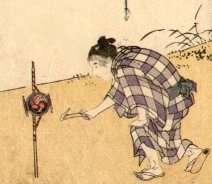 Ges Thru Hic |
Hil thru Hor |
Hos thru I |
|
|
J thru Kakure-gasa |
|
Kakure-mino thru Ken'yakurei |
|
|
Kesa thru Kodansha |
Kōgai thru Kuruma |
Kutsuwa thru Mok |
Mom thru N |
O thru Ri |
|
Ro thru Seigle |
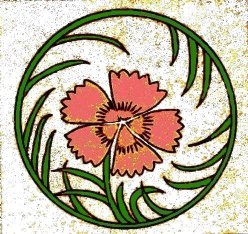 Sekichiku thru Sh |
Si thru Tengai |
Tengu thru Tsuzumi |
|
|
Yakusha thru Z |
|
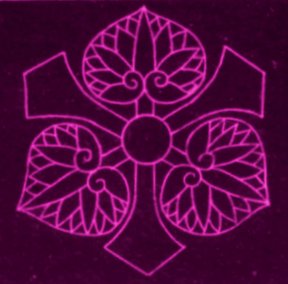
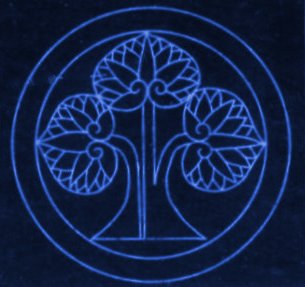
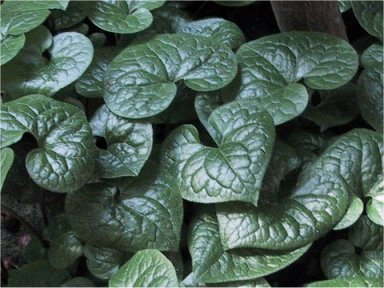
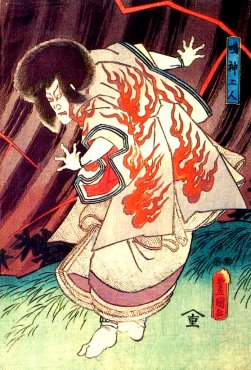
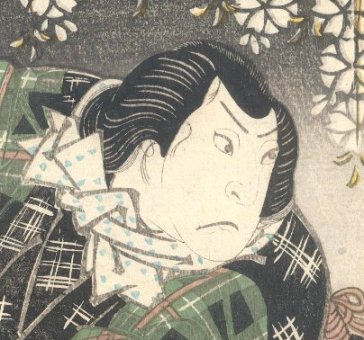
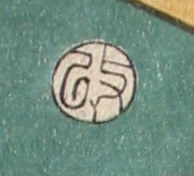
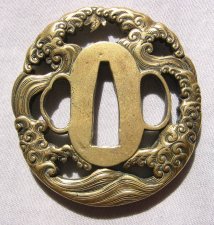
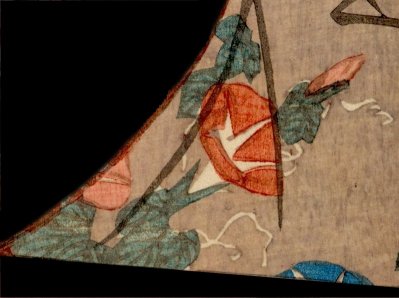
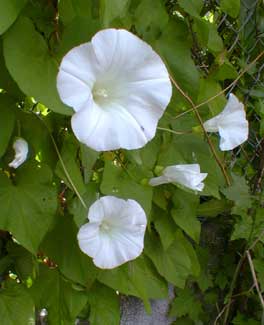
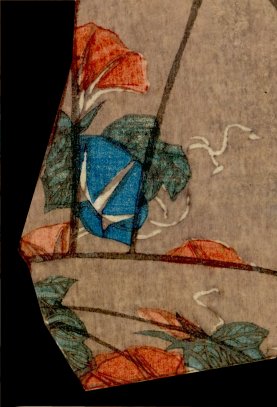
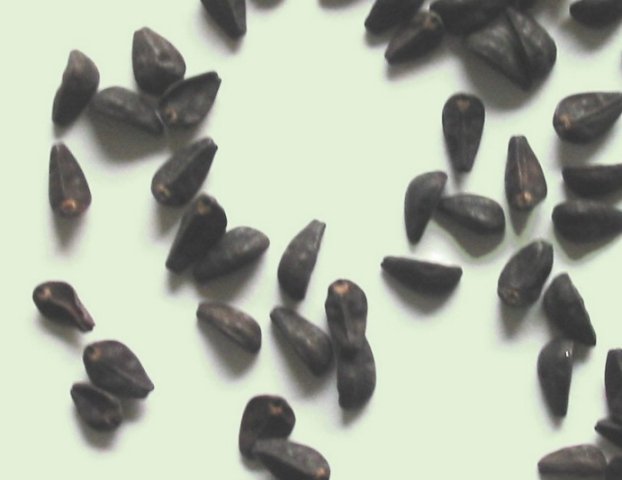
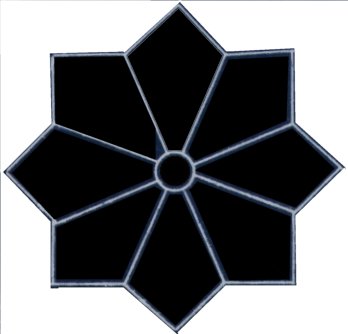
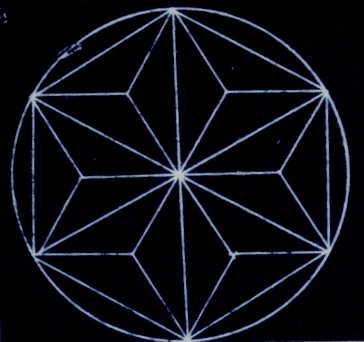
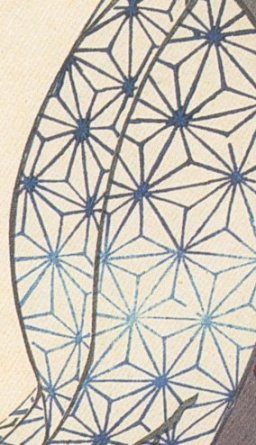
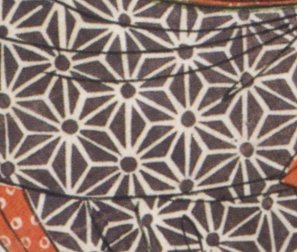
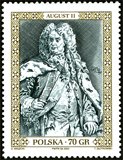
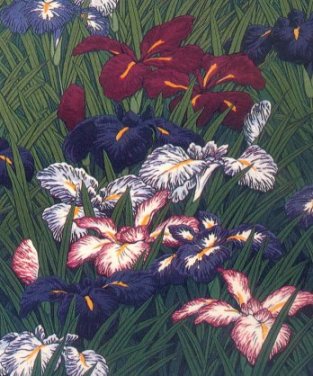
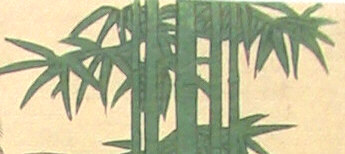
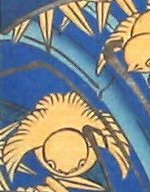
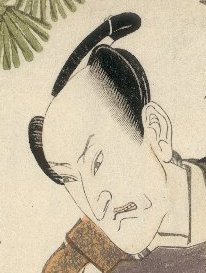
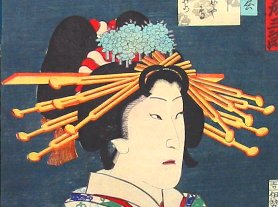
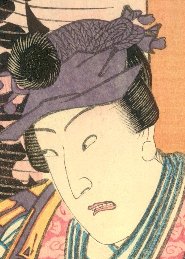
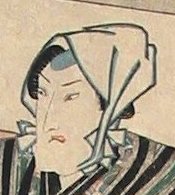
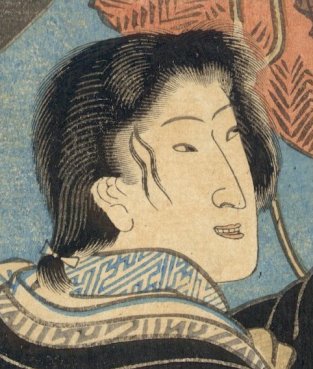
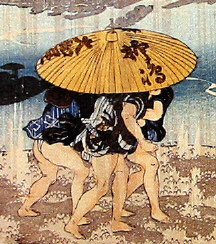
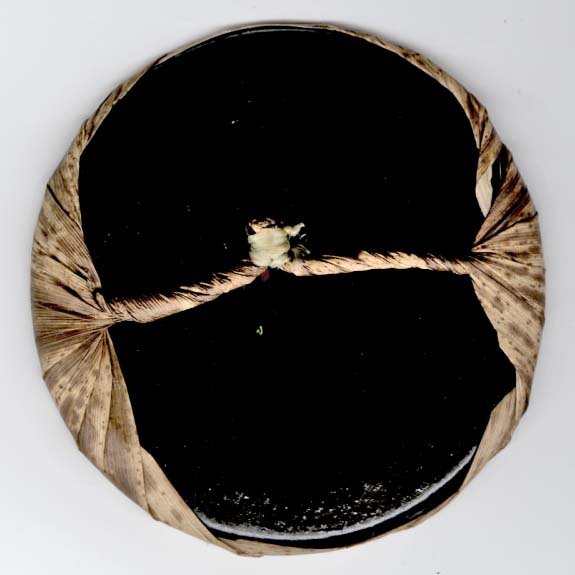
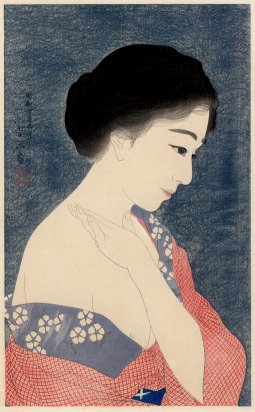
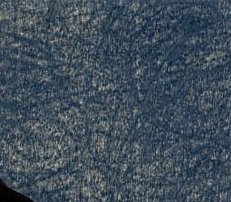
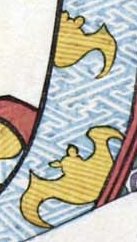
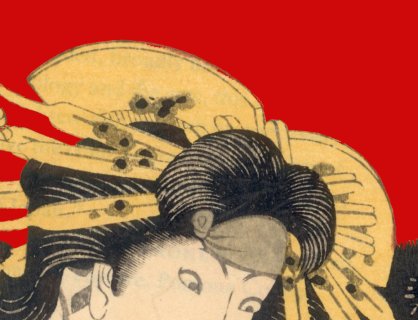
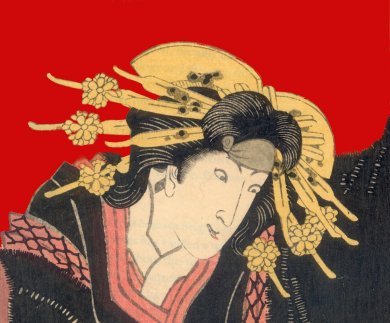
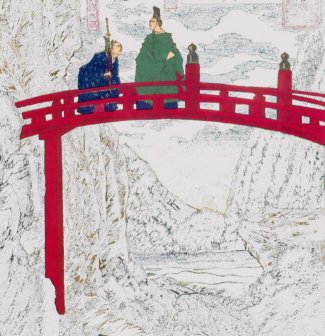
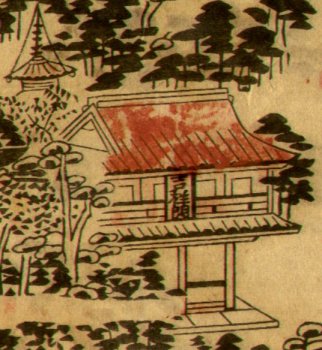
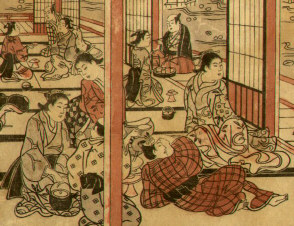
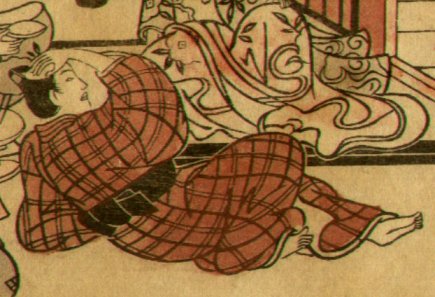

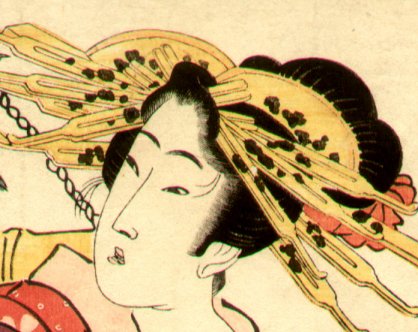
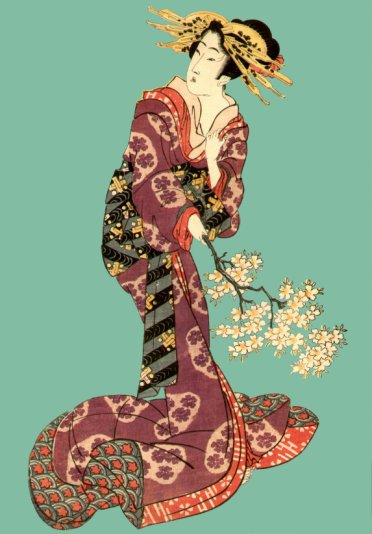
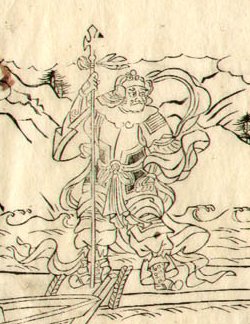

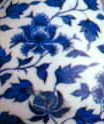
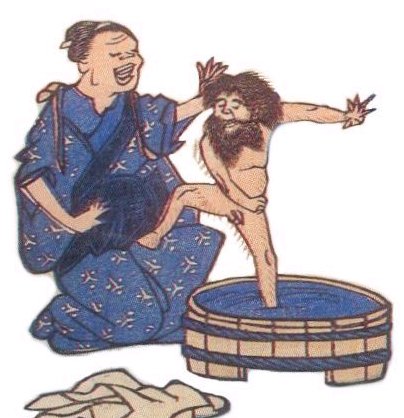



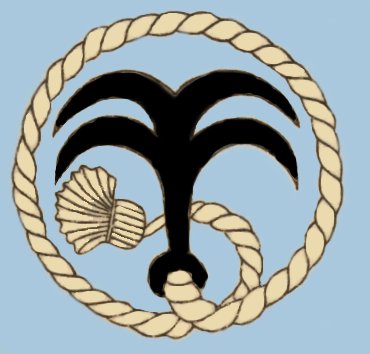
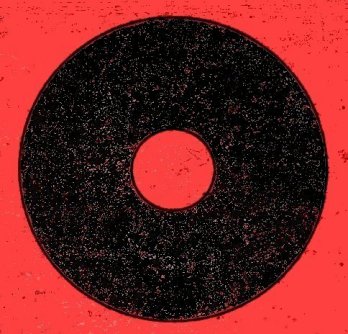
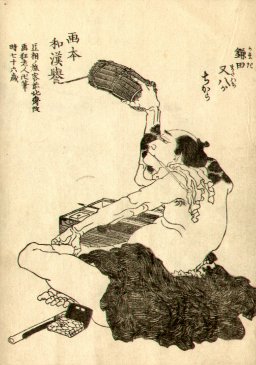
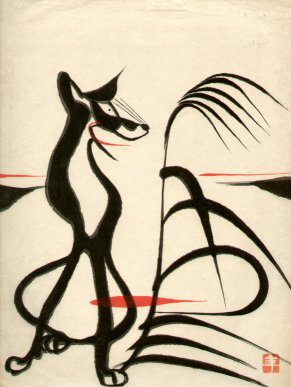
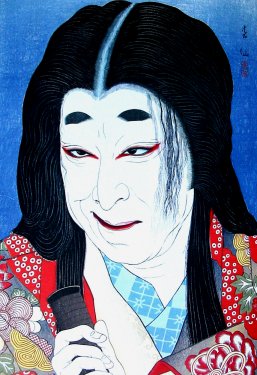
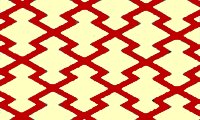
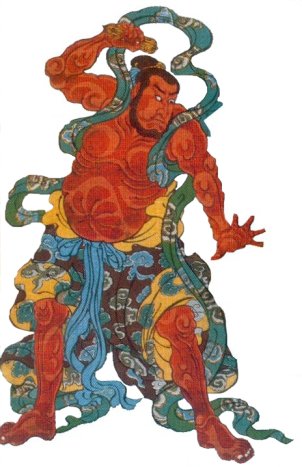
3.jpg)
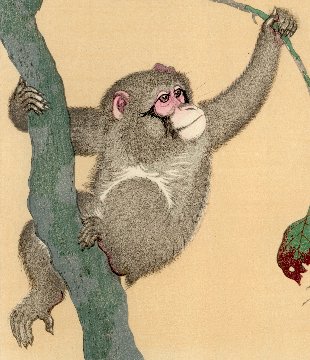
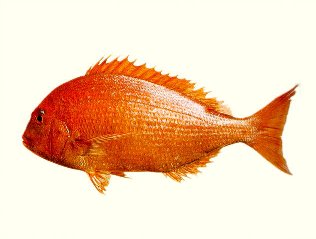
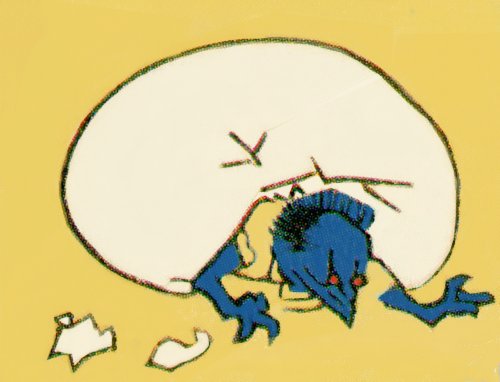
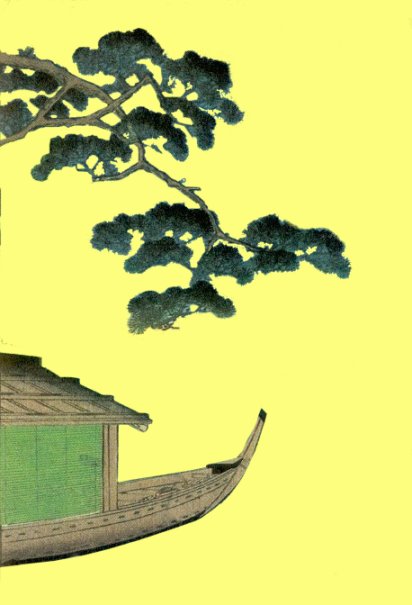
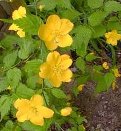
 HOME
HOME